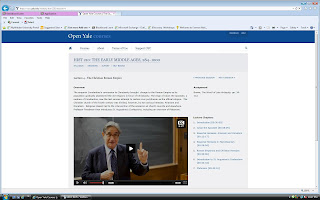Distance Learning
is the new wave in education and training. With the invention of the
Internet, our society has become smarter. We are able to reference
millions of pages of information without ever leaving home. One day
there will be people who have never gone to the library to research a
topic. These people will have to explain the Dewey Decimal System,
calling a house and asking to speak with someone, the Yellow Pages,
cursive, and how to fold a map as if they were teaching ancient
history.
In the immediate
future, we will witness a steady growth in online learning. When I
decided on my colleges, location and distance from home was crucial.
Recently, location is not a factor since students can access classes
remotely. Possibly in twenty plus years we will see universities
that are strictly online. A five-star recruit in basketball can
attend the University of North Carolina's online program and play.
He may never step foot on campus for anything but practice, but
remain an eligible student-athlete.
The public
perceptions on distance learning is changing due to experience. The
online classes are working to always improve and produce great
returns. Also, with more people learning from a distance, they are
able to experience a positive educational setting and relay the
message to others. Personally, I have discussed my online learning
experience with many family and friends. I was able to explain the
positives and answer questions. It is human nature to fear what you
do not know and avoid it. To spread the ideas that online learning
is an equivalent to the traditional classroom and expel rumors is how
I could be a positive force. In my profession, I can become the dean
of our Online Academy and use my knowledge gained from this class to
make it better.
I am grateful that
I have learned so much about a method that will become very popular
in the future. I can be the expert at my school on the subject and
help students have a positive learning experience.
